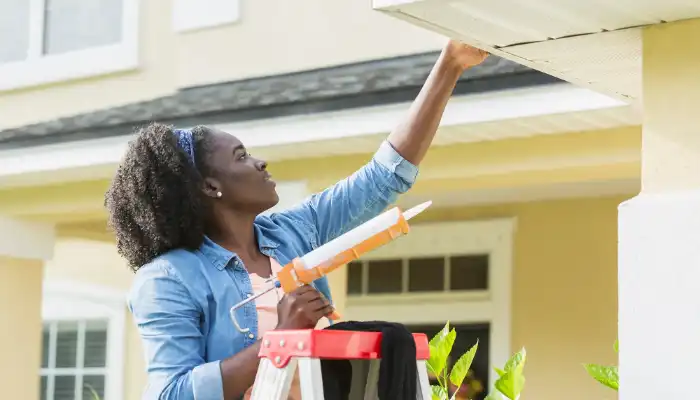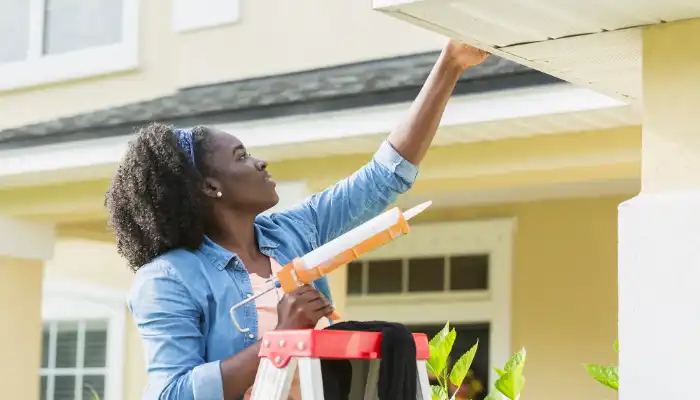
Ownership of a house provides immense gratification besides the onus to maintain it. When a leaky faucet, for example, disrupts your morning or cracks your tiles and messes up the look of your bathroom one question arises: should you do the fixing yourself or call an expert? This guide will explore the pros and cons of DIY home repair so that you can make informed choices about your next project.

The Allure of DIY: Saving Money and Building Confidence
There is a sense of contentment in being able to fix things by yourself. However, there are some other benefits associated with doing home repairs by oneself:
- Cost Savings: This is a key advantage. With DIY projects you get to:
- Avoid Labor Costs: Often the largest portion of a repair bill comes from charges associated with labor. Doing it yourself eliminates this cost.
- Skip Service Fees: Many handyman services charge additional fees for travel or emergency response. DIY lets you bypass these extra costs.
- Empowerment and Self-Reliance: There’s something about successfully finishing off a repair job that gives one a feeling of:
- Accomplishment: Fixing something yourself is a confidence booster. You’ll take pride in your newfound skills and the improved functionality of your home.
- Increased Self-Reliance: Learning basic repairs empowers you to tackle future issues without relying on outside help.
- Scheduling Flexibility: The ability to plan out their own timeline while working on a home improvement project gives homeowners an upper hand when it comes to:
- Work at Your Own Pace: No need to wait for a technician’s availability. You can tackle the project in stages or breaks that fit your schedule.
- Choose When to Fix: It might not be necessary that every little leaky faucet becomes an emergency plumbing issue immediately. Do-it-yourself allows you to deal with the problem at your convenience.
The Flip Side of the Coin: Challenges of DIY Home Repair
However, there are disadvantages associated with DIY. Here are some things to consider before embarking on any projects:
- Skill and Knowledge Limitations:
- Risk of Errors: Trying to fix something beyond your scope can cause mistakes. Additionally, improper installations or faulty repairs may lead to more destruction that eventually costs more money to rectify.
- Safety Concerns: Electrical work, plumbing repairs, and projects involving structural elements can be hazardous for a novice DIYer. Improper handling could lead to injury or property damage.
- Time Investment:
- Learning Curve: Unfamiliar tasks require research and learning. This adds time to the project compared to hiring a professional who can complete the job efficiently.
- Project Delays: Unexpected complications or missing materials can cause delays. Factor in buffer time for troubleshooting and potential hiccups.
- Warranty and Insurance Considerations:
- Limited Recourse: In many cases, DIY fixes come without warranties; if it breaks again you have to pay for it yourself.
- Voided Warranties: If you make improper repairs on appliances or other systems in your home, they will lose their manufacturer’s support if they malfunction in the future.
Understanding Feasibility: Can You DIY It?
Before plunging headlong into a project one must critically evaluate its feasibility. Below are some important considerations:
- Complexity of the Repair or Renovation:
- Difficulty Level: Be honest with yourself about the technical expertise required for the project. Electrical wiring fixes or structural repairs are best left to licensed professionals.
- Specialized Tools or Expertise: Some processes require specialized tools or understanding. Is there any equipment that is required for the project that you don’t have or skills that you are not able to perform?
- Available Time and Resources:
- Time Commitment: Think of your timetable. Putting in a new faucet may be a weekend job, but tearing up a whole bathroom could take weeks.
- Budget Constraints: Consider costs including materials, (if applicable) tools, and permits among other things. Can the project fit into your budget plan?
- Risk Tolerance and Confidence Level:
- Comfort with DIY: How fine are you with making repairs yourself? Take stock of your previous work and openness to learning new things.
- Previous Experiences: Have you ever completed similar projects before successfully? Past experiences can sometimes be relied upon as an important indicator of your present abilities.
The DIY Path: Tips for Homeowners Who Want to Roll Up Their Sleeves
If you have assessed its viability and feel confident about doing it by yourself, then here are some ideas for success:
- Start Small, Build Big: Begin with manageable projects like painting a room, replacing a doorknob, or patching a small hole in drywall. In this way, they will boost your self-assurance and give you the necessary skills needed in subsequent undertakings.
- Education is Key: Invest in yourself learning how to fix things! Before embarking on any task whatsoever, make use of internet manuals or order paper ones which can tell you how exactly it should be done.
- Do Not Hesitate To Ask When You Don’t Understand: There is no shame in looking for guidance. Consult knowledgeable people at hardware stores near you who will guide you on issues concerning materials needed as well as best practices regarding tools application among others.
Knowing When to Call in the Professionals
Even the most enthusiastic DIYer has limitations. Here are some indications that you might have to consider professional assistance:
- Project Complexity: For work requiring specialized skills, permits, or adherence to building codes, hire a professional instead.
- Safety Concerns: It is better to let qualified professionals handle tasks like electrical wiring, and plumbing repairs involving gas lines and structural modifications so as not to compromise on safety.
- Time Constraints: Hiring an expert can save you time if you have too much work at your disposal therefore giving focus on other matters.
Conclusion
To do or not to do it yourself – this depends on how thoroughly one examines the respective project, evaluates his or her abilities, and considers its suitability. By taking into account the factors discussed above, you will be able to make well-founded decisions that lead to successful project outcomes first of all ensuring safety and secondly making sure that you are capable of creating/keeping an attractive home inside which it feels good. Remember also that looking for help when need be is part of being responsible enough about DIY –knowing where there is a need for experts! So equip yourself with tools or a phone, get set, and go on a journey towards improving your house interior!
